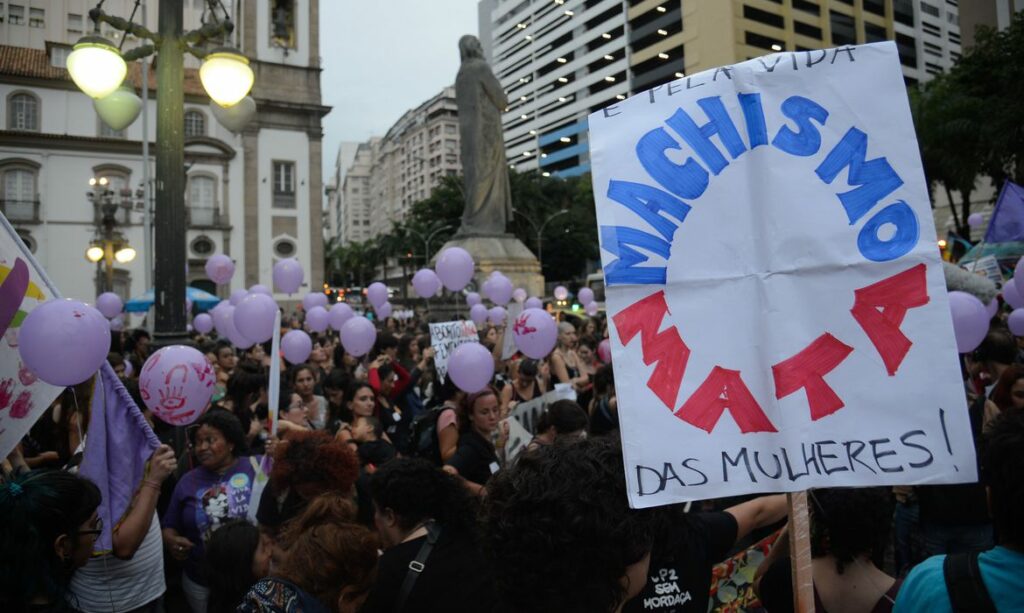The popular and prominent term “Macho man” typically refers to a man exhibiting qualities generally considered masculine. While these can include positive attributes like protection, it is mainly associated with negative aspects like aggressiveness and virility. “Macho” derives itself from the concept of “machismo,” a culture that encourages an extreme masculine identity prominent throughout Latin culture. Characteristics of a machista include being courageous, remaining emotionless, serving as the household’s main financial provider. However, the most important trait of a machista is to maintain control over women. To be a machista is to embrace the toxic value of misogyny and fuel the epidemic of femicide in Latin America.
Coined by Diana Russell as the gendered term for homicide in 1976, “femicide” is defined as the murder of women by men, simply because they are women. It is different from the term “feminicide,” which encompasses both male perpetrators and the state that normalizes this type of misogyny. These terms often overlap as femicide is frequently enabled in states that fail to protect and prosecute perpetrators of the act, qualifying as feminicide. Unfortunately, this concurrence is a reality for women everyday in Latin America.
According to the Human Rights Research Center, a woman is a victim of femicide every two hours in the Latin American region. The degree of severity does fluctuate quite heavily across the region, with nations like Honduras, El Salvador and Brazil reporting the largest number of femicides in 2021, whereas Nicaragua, Chile, and Peru reported significantly less of them. This disparity is attributed to increased gang activity within the Northern Triangle of Central America, where violence against women is often a method of control or retaliation. Nonetheless, the statistic remains alarming and has been accredited to multiple factors, the main one being the persistence of machismo.
Latin American machismo can be traced back to the conquest era in the late 15th century, with an aggressive and dominating Spanish Crown arrival. Although they were not the ultimate origins of male dominance in the region, Conquistadors reinforced the culture through their own patriarchal systems, such as the decimation of Indigenous populations and the spread of Catholic Church values across the land. Colonizers, like Hernàn Cortes, arrived and raped Indigenous women, a potential starting point for a long-lasting culture of gender-based violence. From events like these, machistas were born and perpetuated throughout Latin American culture. Men grow to assume roles of dominance and control by assuming the position of head-of-the-house. By providing both social and financial stability within the household, entitlement is felt to exert authority over their partners. This might manifest as control, coercion, and in some cases, violence. It is for this reason that the United Nations Office on Drugs and Crime reported that more than 55% of women murdered globally were killed by intimate partners, compared to only about 15% of men in 2022. Conceptualized as intimate partner femicide, it is the most common form of femicide sustained in Latin America.
While the data on gender-based crime and violence in Latin America is informative, its accuracy remains questionable due to reporting inconsistencies. The normalization of machismo creates systemic impunity and patriarchal legal frameworks, where victims’ perpetrators receive minimal prosecution as they are re-victimized. In many cases, the justice system itself is complicit in the suffering of women. Although countries across the region adopted the Belém do Pará Convention in 1994, which ratified violence against women as a human rights violation, many cases of femicide still go without ramification. The femicides in Ciudad Juárez exemplify this, where more than 500 women were killed from 1993 to 2011 in the northern Mexican city. A study conducted by Colegio de la Frontera Norte found that a large portion of these were intimate partner femicides, very few of which faced conviction. International rulings against Mexico were brought up for its controversial response to these femicides. Rule of law is weak due to political influence, organized crime groups infiltrate police forces and local governments, and courts are overwhelmed and lack critical resources.
Movements such as the “Disappearing Daughters” project in Mexico, which won the 2020 Online Journalism Award, and the “Ni Una Menos” movement, which drove the legalization of abortion in 2020 in Argentina and organized mass protests across the continent, have raised global awareness of femicide within the region. Despite these efforts, there has been no substantial decrease in the total number of femicides. In fact, the number increased from 4091 to 4445 from 2020 to 2021. This constant threat of violence impacts women in Latin America in different ways, ranging from mental health conditions like depression and anxiety, to substance abuse.
The epidemic of femicide in Latin America is not simply a matter of individual violence, but rather a cultural and institution crisis. Namely accredited to a deeply entrenched culture of machismo and corrupt justice systems, femicide continues to perpetuate at alarming rates. Until justice becomes a lived reality for women, Latin America will remain one of the most dangerous places across the globe to be one.

Edited by Callixte Baron and Kassandra Gervasi.




